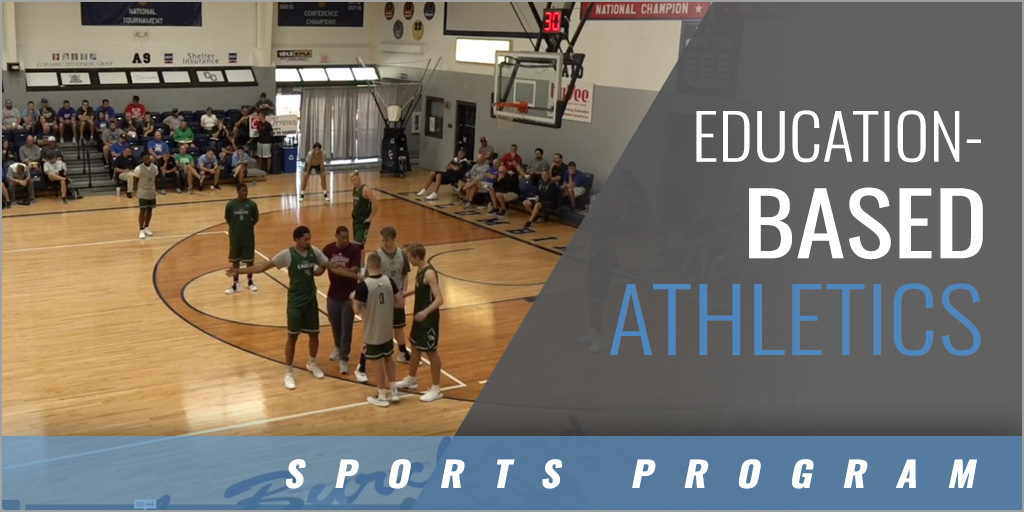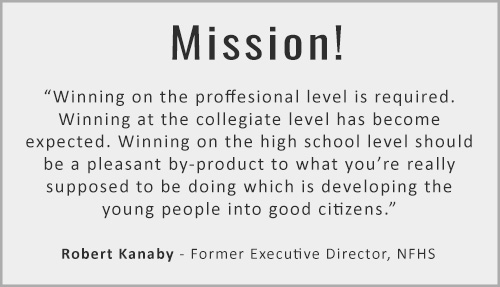|
By: Dennis Walton, CMAA from Biddeford, Maine Athletic administrators across the country face the dilemma of attempting to run effective athletic programs with less funding as school districts battle budget restraints in a struggling economy. As school districts cut academic programs and positions, it becomes inevitable that, despite their worth, interscholastic programs also feel the impact. Most districts feel that they cannot justify cutting funding in academic programming while leaving “sports” untouched. Because the athletic budget is such a small percentage of a school’s overall budget, small cuts to the athletic budget can have a great impact to the program. In these difficult times it becomes imperative for athletic administrators to defend their programs and justify the funding necessary to run them. It is important that athletic administrators advocate that interscholastic programs are more than just recreation, which they are so often perceived to be by elected school board members and community tax payers. A school system’s interscholastic programs should not be perceived as being separate from the academic program; it should be viewed as part of it. Athletic administrators should be sure that they could convey to their community members the value of their athletic program in a student’s overall educational experience. It is important that athletic programs have mission statements that emphasize the values of their programs. Their mission statement should be directly aligned to the values embedded in the school’s mission statement. At Biddeford (Maine) High School the athletic department put together a Power Point presentation for its school committee members that made the connection between the values and principles embedded in both the educational and athletic missions. Once again, the message to the committee and the community was that athletic participation was not a diversion made available to students after school; instead it was a vital and necessary component to the overall educational experience of the students in Biddeford. It is important that athletic programs have mission statements that emphasize the values of their programs. Their mission statement should be directly aligned to the values embedded in the school’s mission statement. At Biddeford (Maine) High School the athletic department put together a Power Point presentation for its school committee members that made the connection between the values and principles embedded in both the educational and athletic missions. Once again, the message to the committee and the community was that athletic participation was not a diversion made available to students after school; instead it was a vital and necessary component to the overall educational experience of the students in Biddeford. It is also important to be able to provide evidence that the athletic experience is education based. In Biddeford we call this “living the mission.” As part of the presentation the athletic department used the statistics of an entire school year that made a direct correlation between athletic participation and educational successes in the classroom. At Biddeford that school year 72% of students with a grade point average (GPA) of between a 5.0 and 6.0 participated in athletics. That percentage dropped to 55% with students who had between a 4.0 and 5.0 GPA. The percentage continued to drop in direct correlation to student GPA. The final number demonstrated that only 3% of students who had between a 0 and 1.0 GPA participated in athletics. As part of the “living the mission” movement, athletic departments need to ensure that all stakeholders associated with the athletic program are mindful that the school’s athletic mission statement is an “operational mission”, meaning that all stakeholders demonstrate that the values in the mission are revealed through their actions, how they make decisions and how they resolve conflicts among competing values. It is not enough to simply display the “stated” values that hang on office walls. During the school committee presentation the athletic department highlighted several examples of how our mission was “operational” including the department’s enforcement of their Code of Conduct, the heightened academic and social expectations through the school’s eligibility requirements, and the strict and enforced coaches’ performance expectations. Other means of evidence included the development of incentive programs and awards which all have the values of the mission embedded in their intent. The school initiated an “Iron Tiger” three-sport athlete award that recognizes those student athletes who compete in all three seasons over the course of the school year. The school’s “Character Award” is presented to one member of each team each season and is given to that individual who best exemplifies the qualities of perseverance, respect, integrity, dependability and empathy, all qualities that are pillars of the school’s and athletic mission statements. Finally, the athletic department gives out a “Volunteer Achievement Award” at every end of the season awards ceremony that emphasizes the importance of civic duty and community involvement -- values highly emphasized in the both the school and athletic mission statements. As schools we can rest assured that obtaining the necessary funding too effectively run our athletic programs will always a be local challenge. With shrinking school budgets and annual “zero increase” mandates becoming the norm, no amount of convincing will likely result in municipalities reaching deep into the coffers to ensure that the athletic departments have all of the funding they hope to have. Budgets will continue to be tight even by educating elected officials and communities. However, by educating our elected officials and communities of the importance of education based athletics, perhaps athletic departments will obtain the funding necessary, and, will help develop a better understanding and appreciation for the value of interscholastic programs and all of its benefits.
|









